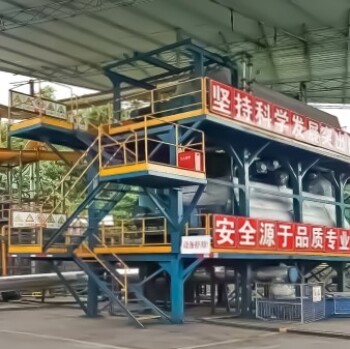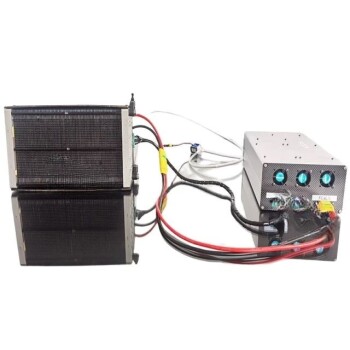Biomass gasification is a thermochemical process that converts biomass, a solid fuel, into a gaseous fuel of higher value, primarily consisting of carbon monoxide and hydrogen. This process operates at temperatures exceeding 700°C in the presence of a gasifying agent such as air, oxygen, steam, or carbon dioxide. The primary objective of biomass gasification is to produce a gas, known as syngas, with high concentrations of hydrogen and minimal tar content.
Process Details:
-
Thermochemical Conversion: The process begins with the heating of biomass at high temperatures in the presence of a gasifying agent. This agent facilitates the conversion of the chemical structures of biomass into gaseous products. The temperature must exceed 700°C to effectively break down the biomass into its constituent gases.
-
Reactions: Key reactions in biomass gasification include:
- C + CO2 → 2CO: This reaction is endothermic, absorbing heat as carbon dioxide reacts with carbon to form carbon monoxide.
- C + H2O → CO + H2: Another endothermic reaction where water reacts with carbon to produce carbon monoxide and hydrogen.
- C + 2H2 → CH4: This reaction, which is exothermic, occurs at temperatures above 500°C, converting hydrogen and carbon into methane.
-
Syngas Composition: The syngas produced contains not only carbon monoxide and hydrogen but also other components like carbon dioxide, methane, tars, lighter hydrocarbons, nitrogen, sulfur compounds, and traces of chloride. These additional components can affect the quality of the gas, hence the need to minimize them.
-
Environmental and Economic Benefits: Biomass gasification is considered a poly-generation technology as it can simultaneously produce multiple products such as gas, biomass charcoal, wood vinegar, and wood tar. This technology is advantageous for both environmental protection and economic benefits, as it utilizes locally available biomass residues, reducing waste and providing a valuable energy resource.
-
Comparison with Pyrolysis: While both pyrolysis and gasification involve the thermal decomposition of biomass, they differ in the presence of oxygen and the temperature range. Pyrolysis occurs in an oxygen-free environment at lower temperatures (500°C–700°C), producing bio-crude oil, gas, and char. In contrast, gasification operates at higher temperatures (>700°C) with controlled oxygen to produce syngas.
Conclusion: Biomass gasification is a sophisticated energy conversion technology that transforms low-value biomass into a high-value gaseous fuel, contributing to sustainable energy solutions and waste management. Its ability to produce multiple outputs and its environmental benefits make it a promising technology for the future.
Elevate your renewable energy solutions with KINTEK SOLUTION, where biomass gasification technology meets efficiency and sustainability. Experience the transformation of biomass into valuable syngas, and join the forefront of waste-to-energy innovation. Discover how our advanced gasification systems can power your future—contact us today and let us pave the way for cleaner, greener energy production!











